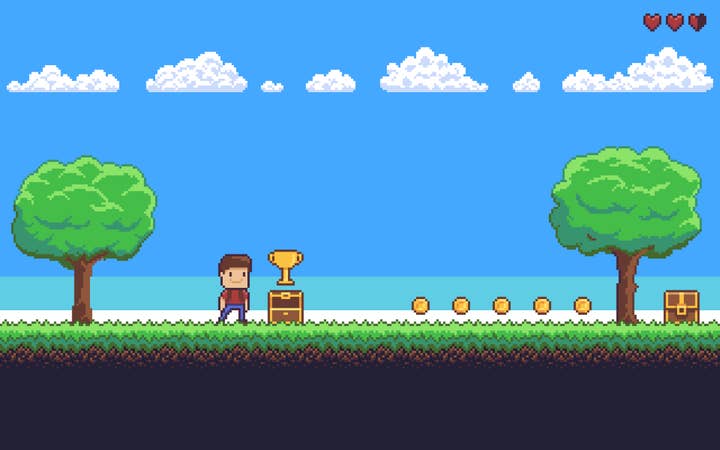Gamification is broken
In his book, developer Adrian Hon excoriates a one-time utopian idea: that gaming can be used to "motivate" workers
Sign up for the GI Daily here to get the biggest news straight to your inbox
Mary Poppins sang that "a spoonful of sugar helps the medicine go down," meaning that boring household chores can be turned into fun activities. Being a nanny of exceptional ability, she delivered on her promise. The children had fun, and they completed their chores.
Gamification makes the same promise – it's essentially a system for turning real world activities into games, by adding challenges, prizes, leaderboards and all that. But as game designer Adrian Hon argues in his entertaining book "You've Been Played (How Corporations, Governments, and Schools Use Games to Control Us All)", the key difference between Mary Poppins and many gamification applications, is that Poppins was interested in improving the lives of her charges, while most of the companies behind gamification apps are emphatically not interested in the wellbeing of their users.
While many gamification implementations do deliver – language teacher Duolingo is a fine example – many are intrusive and exploitative and are apt to make the lives of their users significantly worse, Hon argues.

Duolingo isn't really a game. It's a bunch of lessons with motivational gamification tools, like badges, achievements, and streaks. It works because "users are already highly motivated to learn, perhaps because they’re moving to another country for work," according to Hon. Duolingo's effectiveness diminishes when the user has no external motivation. The app's gamification is not powerful enough to make Duolingo an entertaining game in its own right.
This is where workplace games come into focus. Many companies ask employees to engage in games related to their labour activities. Workplace and coercive gamification ignores the user's motivation. These apps are only interested in the goals of the employer.
The most egregious examples that Hon puts forth are apps that reward workers for hitting labour targets, which are embedded inside games. They are devices to track, measure and punish workers. Amazon and Uber use just such games to motivate workers.
But it's hard to see how these games are anything other than a burden for the people required to play them. As Hon says, the key here is choice. I can choose to learn Spanish via a gamification app, and I might even enjoy the challenges and rewards embedded within the game. But workers are not given a choice.
The games they are required to play are extra work for them, and failure to "win" has onerous consequences.
Points and rewards
Hon makes the point that gamification's primary features, such as points, badges, challenges, levels, and leaderboards are not games. They are features of games, and not particularly important ones at that.
"Just remove all the points and rewards and achievements from a game … and see if people will still play it," he writes. "The answer for Zelda, for Tetris, for Mario, for Elden Ring, for Hades, is a resounding yes.
Later he adds: "Take away the points and rewards in most gamified experiences, and you’re left with nothing."
Anecdotes abound of corporate overreach, when it comes to gaming. In 2019, Amazon warehouse worker Postyn Smith, described the company's workplace games: "Most of the games involve some aspect of competition. You might race one-on-one as flying dragons against a nearby worker or compete as a floor against another floor for your Amazon mascot to run faster around the course.
"Take away the points and rewards in most gamified experiences, and you’re left with nothing"Adrian Hon
"In another game, you attempt to complete missions that have you work faster and faster for longer periods of time. They also provide incentives that boost your score for returning from break faster. The programs have finely tuned tricks to tap into your mind so that we work harder, faster, and longer."
None of this looks remotely like fun. Indeed, as Hon points out, it feels more like an updated version of Victorian factory conditions, in which bosses sought to extract every ounce of labour from their workforce, no matter the consequences.
Hon writes: "There’s another way to describe workers labouring longer for the same pay: it’s called cutting their wages. What’s more, these long, high-pressure hours come at a terrible human cost. Countless Amazon warehouse workers are subject to physical pain and exhaustion, and according to reporting by Reveal, the rate of serious injuries at their facilities is more than double the national average for the warehousing industry."
It's worth noting that Amazon is not the only company that uses gaming to "motivate" employees. Hon's book describes similarly gruesome tales coming from the likes of Uber, Lyft, Domino’s, Instacart, Kroger, T-Mobile, Microsoft, Barclays, and Unilever.
Exergame excesses
Another powerful example of gamification's excesses is in the field of exergaming. Apps can and do help to motivate people who need a bit of a push to jump on their exercise bike. But these apps are often intrusive to the point of bullying. They rarely have any scientific credentials, and minimal-to-zero appreciation of the user's individual needs.

Hon writes: "None of this is to diminish people’s enjoyment of exergames or the fact they’ve helped many get fit. Rather, it’s that exergames aren’t a panacea. They can be based on flawed measures and poor science, and regardless, should be considered complementary to other activities rather than as a superior high-tech replacement."
App makers often make startling claims about the effectiveness of their products. In 2016, Lumos Labs – the company behind brain training Lumosity games – was heavily fined by the U.S. Federal Trade Commission over claims of false advertising.
The Commission found that Lumosity's marketing "preyed on consumers' fears about age-related cognitive decline, suggesting their games could stave off memory loss, dementia, and even Alzheimer's disease." Such claims were made without any scientific evidence.
Engagement farming
While corporations and self-improvement app-makers exploit gaming's stock of badges, collectibles and leaderboards, game companies have doubled down on finessing these psychological devices.
Hon points towards game company obsessions with "slot machine" mechanics like loot boxes which have been used to generate extra revenues while adding little to the core experience of the games themselves. They are, he argues, games within games, which are targeted at players who are themselves obsessed with gaining the best digital stuff, to the dubious benefit of the game company's coffers.
Likewise, open-world maps festooned with activity markers and games containing hundreds of achievements are less about increasing a game's fun factor, and more about squeezing as much engagement out of the player as possible. It's no accident that these gamification tricks are generally despised by game critics.
Reviewing FIFA 23 last year, Eurogamer's Chris Tapsell wrote: "All the worst parts of modern engagement-farming design are here. The red notification dots that keep you looking at your phone, the level-ups, the league-climbing system, the second-and third-screen web apps, the loot boxes, of course."
"For us, game addiction was by design: it meant success for our business"William Siu
Gamification, either in games or as part of a labour regime, are rarely about delivering fun, but rather about exploitation and profiteering.
Hon writes: "Just as companies and workplaces have used generic gamification to coerce people to do things they haven’t chosen and aren’t in their best interests, the video games industry has repurposed those systems for the same goal: to make as much money as possible."
Writing in the New York Times, William Siu, a founder of the mobile gaming developer Storm8, warned about game design's dangerous tilt toward engagement.
"I am very familiar with game addiction, as that’s what I thought about every day for more than a decade. I hired product managers and engineers to track everything players did and analyze their behavior. Using the data we collected, we experimented with every feature of our games to see which versions allowed us to extract the most time and money from our players. For us, game addiction was by design: It meant success for our business."
Civility score
Meanwhile in China, the city of Suzhou has introduced a "civility score" in which citizens earn – or lose – points based on their conduct. Paying bills on time earns extra points. Parking in the wrong place carries a penalty. The game is played on a mobile app, and is ostensibly opt-out compliant. But one person complained that they were required to show the app in order to pick up their children from kindergarten. Little wonder such initiatives are compared to TV dystopias like Black Mirror.
Famed gamification boosters like Jane McGonigal originally touted the use of play as a positive in real world situations. Hon's book is a coherent reminder that it's moving towards yet another technological-adjacent utopia, co-opted by corporate and even government interests to no good end.
Even so, this might not be the end of the story. Hon ends his book with a useful series of recommendations that could curb the excesses of harmful gamification, and perhaps bring us back to a more positive outlook.
I believe that games can make the world a better place. But as Hon points out, the vast weight of gamification's effects to date have been exploitative and harmful. It will take a lot of effort to reverse this trend, which is why Hon's warning is so timely.
Sign up for the GI Daily here to get the biggest news straight to your inbox
